#cirripedia
Explore tagged Tumblr posts
Text
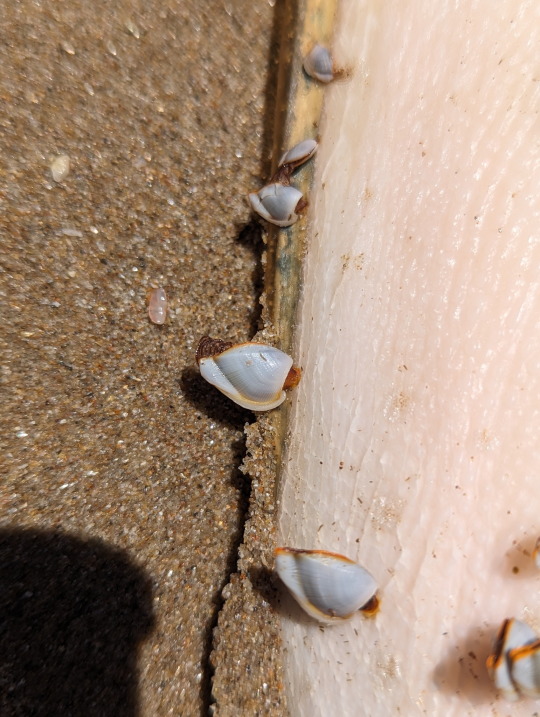
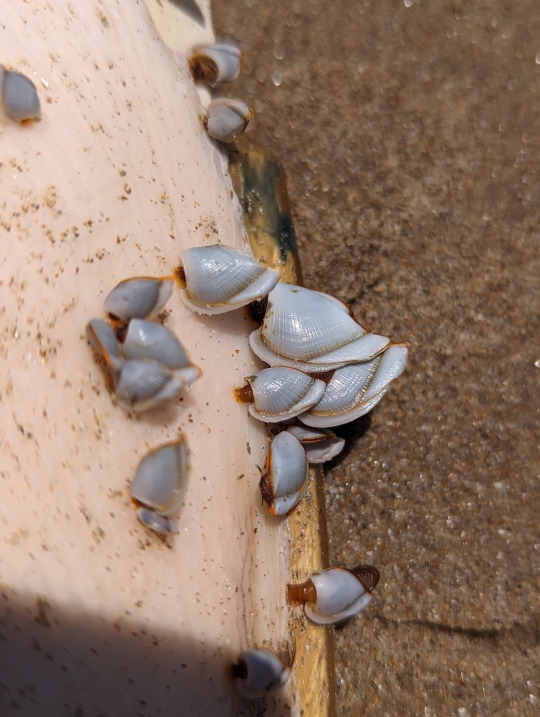
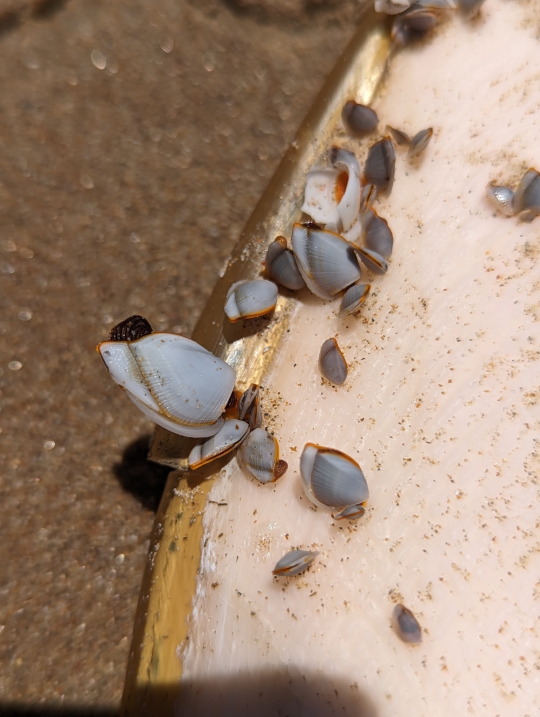
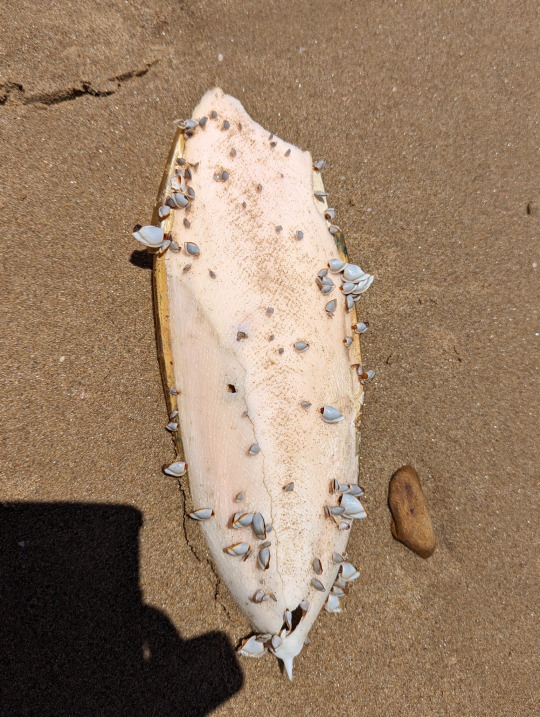
Goose Barnacles growing on a cuttlefish shell.
14/10/23 - Lepas sp.
QLD:WET - Garner's Beach
#Lepas#unidentified#invertblr#invertebrates#arthropoda#arthropods#Cirripedia#Barnacles#Crustacea#Crustaceans
15 notes
·
View notes
Text
youtube
1 note
·
View note
Text

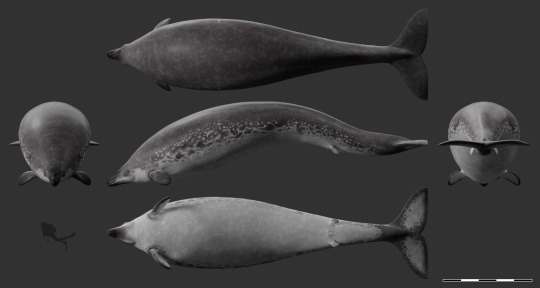
The archeocete Perucetus colossus dives through a coastal bloom of jellyfish in the Pisco Basin (southern Peru), some time during the Eocene (with bonus multiview).
I originally intended to add epibionts to this reconstruction (reflecting the specialized communities found on many living whales, especially baleen whales). Yet, interestingly, it appears that most animal epibionts and ectoparasites of modern cetaceans, such as whale barnacles (Hayashi et al. 2013) and remoras (Friedman et al. 2013), only appeared in the Neogene or late Paleogene, or have a poorly known (co-)evolutionary history, like whale lice (Pfeiffer 2009, Iwasa-Arai & Serejo 2018) and pennellids (large parasitic copepods) (Hermosilla et al. 2015). So, no epibionts* for big lad Perucetus!
References and notes about the reconstruction:
*animal epibionts. Unicellular eukaryotes like diatoms were most likely present on early cetaceans, given their prevalence on modern large marine animals (Ashworth et al. 2022). Of course, it is possible that other animals (i.e., early, less specialized representatives of modern groups, or different taxa altogether) were also already exploiting the surfaces offered by these early whales; however, this remains entirely speculative.
The reconstruction of Perucetus proposed in its original description (Bianucci et al. 2023) includes some rather odd (if interesting) choices about soft tissues, including limbs with webbed and distinguishable fingers, and a manatee-like tail. While these choices might be defendable in light of the rather basal status of Perucetus among cetaceans, I opted for a more derived look based on the assumption that fully marine cetaceans like basilosaurids would have probably rapidly acquired hydrodynamically favorable adaptations, pushing them towards a more familiar Neoceti-like appearance (even though Perucetus itself was likely a poor swimmer (Bianucci et al. 2023), it seems likely to me that this was a secondarily acquired trait, given the less extreme morphology of other basilosaurids).
Reconstruction in the multiview scaled to ~18 m in length after the estimations of Bianucci et al. (2023).
References:
Ashworth, M. P., Majewska, R., Frankovich, T. A., Sullivan, M., Bosak, S., Filek, K., Van de Vijver, B., Arendt, M., Schwenter, J., Nel, R., Robinson, N. J., Gary, M. P., Theriot, E. C., Stacy, N. I., Lam, D. W., Perrault, J. R., Manire, C. A., & Manning, S. R. (2022). Cultivating epizoic diatoms provides insights into the evolution and ecology of both epibionts and hosts. Scientific Reports, 12(1), Article 1. https://doi.org/10.1038/s41598-022-19064-0
Bianucci, G., Lambert, O., Urbina, M., Merella, M., Collareta, A., Bennion, R., Salas-Gismondi, R., Benites-Palomino, A., Post, K., de Muizon, C., Bosio, G., Di Celma, C., Malinverno, E., Pierantoni, P. P., Villa, I. M., & Amson, E. (2023). A heavyweight early whale pushes the boundaries of vertebrate morphology. Nature, 620(7975), Article 7975. https://doi.org/10.1038/s41586-023-06381-1
Friedman, M., Johanson, Z., Harrington, R. C., Near, T. J., & Graham, M. R. (2013). An early fossil remora (Echeneoidea) reveals the evolutionary assembly of the adhesion disc. Proceedings of the Royal Society B: Biological Sciences, 280(1766), 20131200. https://doi.org/10.1098/rspb.2013.1200
Hayashi, R., Chan, B. K. K., Simon-Blecher, N., Watanabe, H., Guy-Haim, T., Yonezawa, T., Levy, Y., Shuto, T., & Achituv, Y. (2013). Phylogenetic position and evolutionary history of the turtle and whale barnacles (Cirripedia: Balanomorpha: Coronuloidea). Molecular Phylogenetics and Evolution, 67(1), 9–14. https://doi.org/10.1016/j.ympev.2012.12.018
Hermosilla, C., Silva, L. M. R., Prieto, R., Kleinertz, S., Taubert, A., & Silva, M. A. (2015). Endo- and ectoparasites of large whales (Cetartiodactyla: Balaenopteridae, Physeteridae): Overcoming difficulties in obtaining appropriate samples by non- and minimally-invasive methods. International Journal for Parasitology: Parasites and Wildlife, 4(3), 414–420. https://doi.org/10.1016/j.ijppaw.2015.11.002
Pfeiffer, C. J. (2009). Whale Lice. In W. F. Perrin, B. Würsig, & J. G. M. Thewissen (Eds.), Encyclopedia of Marine Mammals (Second Edition) (pp. 1220–1223). Academic Press. https://doi.org/10.1016/B978-0-12-373553-9.00279-0
#'a heavyweight early whale pushes the boundaries of...' blablabla you've all read it by now#i have nothing to add#it's fat#look at it#that is all#perucetus#cetacean#mammal#vertebrate#eocene#cenozoic#paleontology#palaeoblr#paleoart#my art
427 notes
·
View notes
Text
Round 2 - Arthropoda - Thecostraca




(Sources - 1, 2, 3, 4)
Thecostraca is is a class of crustaceans, many of which have planktonic larvae which become sessile or parasitic as adults. The most well-known group are the Barnacles (subclass Cirripedia), but Thecostraca also includes the parasitic Ascothoracida, and the mysterious Facetotecta.
Facetotecta, comprising only the genus Hansenocaris, are known only from their larvae (image 3) and adults have yet to be recognized, though some scientists believe they may actually be larval tantulocaridans.
Ascothoracidans are parasites of echinoderms and cnidarians. Most genera are meso and endoparasitic (living inside the host) while some are ectoparasitic (living on the outside of the host). They are similar in anatomy to copepods, with six pairs of legs, an abdomen with four segments, a telson, and a bivalved carapace. They feed on their host via piercing and sucking mouthparts, and some more advanced species also absorb nutrients through the carapace. They are sexually dimorphic, in many cases so much so that the smaller males will live inside the larger female’s mantle cavity.
Barnacles (subclass Cirripedia) are more well-known than other Thecostracans. Adult barnacles are sessile filter feeders, except for the infraclass Rhizocephala, which are parasites of other crustaceans. Barnacles attach themselves to a surface as adults, be that a rock, the shell of a mollusc, a ship, or a large animal such as a whale. They come in two common forms: acorn barnacles which grow their shells directly on a surface (image 4) and goose barnacles which attach themselves via a stalk (image 1). Barnacles have a carapace made of six calcareous plates, with a lid made of four more plates. They attach themselves to the substrate by means of a cement gland at the base of their antennae. Eight pairs of thoracic limbs, called cirri, extend from the carapace to filter plankton from the water and bring it towards the mouth. The hairs on these limbs are very sensitive to touch, and help the barnacle sense the world around them. They also have three simple eyes (ocelli) which can sense changes in light, allowing them to close their plates quickly if a shadow is detected.
Thecostracans have nauplius larvae, characterised by a head with antennules, antennae, mandables, and a single eye, three pairs of limbs, a carapace, and a telson. Barnacle larvae are brooded by the parent until their first moult, after which they are released to swim freely using setae.
The oldest known thecostracan fossil is dated from the Middle Cambrian. Traces of the parasitic forms have been dated from the Cretaceous.

Propaganda under the cut:
Barnacles have the longest penis (relative to body size) of any living animal. You can see it in action in the above gif and in this video.
Most barnacles are not parasitic (other than hitching a ride) and usually do no harm to the large animals they attach to. An overload of barnacles tends to be a symptom of an underlying issue, such as the animal being unable to shed its skin. Non-professionals scraping or pulling barnacles off of whales and turtles often does more harm than good for the affected animal!
12th-18th Century Europeans thought that Brants and Barnacle Geese emerged, fully formed, from Goose Barnacles. Gerald of Wales claimed to have seen the birds hanging down from pieces of timber, William Turner accepted the theory, and John Gerard claimed to have seen the birds emerging from their shells. In County Kerry, until relatively recently, Catholics abstaining from meat during Lent could still eat this bird because it was considered a fish.
As filter-feeders, barnacles play an important role in the ecosystem: not only for transferring nutrients up the food chain, but also for keeping the water clean.
When a barnacle chooses its home, it produces a biological glue made of six different proteins. While the glue hardens, it accumulates limestone salts, turning into a concrete-like shell. Barnacle glue is six times stronger than any manmade glue. Scientists are trying to replicate this glue for use in the fields of engineering, construction and medicine, where it can be used as a biological sealant during or post-surgery.
#i could add SO MUCH more but I am trying to make these descriptions shorter both for your sake and for mine#looking forward to narrowing these down to smaller groups in later rounds where I won’t have to write So Dang Much#anyway crabs are coming in the next one#round 2#animal polls#arthropoda
36 notes
·
View notes
Text
Ah, good old Dendy!
Can't believe he's related to Barnacles! What a wonderful world!

Name: Unnamed (1)
Skill: Soul Parasitoid
Quote: "▯▯ ▯▯▯▯▯▯▯ ▯▯ ▯▯▯▯▯▯▯ ▯▯ ▯▯▯▯▯▯▯ ▯▯ ▯▯▯▯▯▯▯ ▯▯ ▯▯▯▯▯▯▯"
(Image by Gustav Paulay)
222 notes
·
View notes
Text
Parasitic crustaceans are wild.
[cw: photos of parasites inside host bodies]
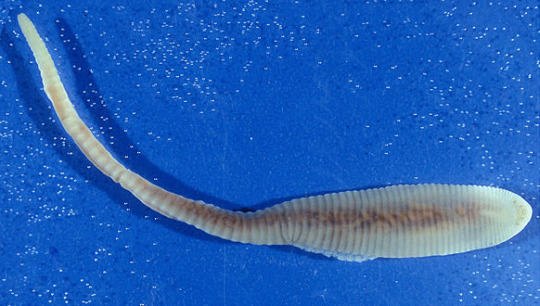
Here is Linguatula serrata, which lives inside the nose of dogs and other Carnivorans. It belongs to group Pentastomida, which has so shed its arthropod appendages that it was long classified as its own independent phylum (attested in fossils all the way from the Cambrian Explosion!), until molecular analyses showed they were in fact strange crustaceans -- closest relatives of the relatively normal-looking fish lice (Branchiura).
And then there’s Pennellidae...

Do those horn-things look like crustaceans to you? And yet the family Pennellidae is fully part of Copepoda, the chief component of crustacean plankton. Its body is simply one elongated trunk and a tiny head biting onto the fish, with two long egg cords trailing behind.
Look at the cod worm (Lernaeocera branchialis), another Pennellidae, hanging from the gills of a fish:
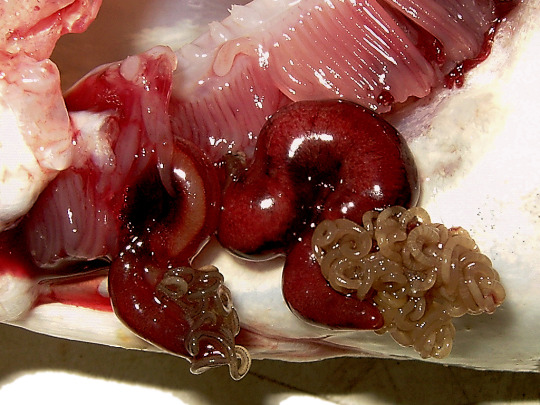
It’s those two red things that look like slugs wearing a wig made of soy noodles. Here’s what it looks like on its own, extracted and preserved:

(source) The coiled strings are egg masses. The slug-like part is the copepod’s trunk. The thin branching thing at the bottom is its head, converted into a sort of root system that no longer does head-like things, but rather burrows into the fish host’s blood vessels to feed its eggs. Incidentally, this is just the female; the male still looks like a regular planktonic crustacean.
Now, regular barnacles (Cirripedia) are strange enough...

(source; picture them as shrimps lying on their back, with a digestive system that fell out of the body wall but is still contained by the outer shell, and feathery legs poking out to filter water)
... but parasitic barnacles of clade Rhizocephala go much further:

Here, on the left, is Sacculina carcini. No, not the crab; the yellow sac poking out of the crab’s belly. On the right, its relative Clistosaccus paguri shows what it might look like once extracted.
Sacculina carcini is fun. A larva looks much like any other crustacean planktonic larva, until it finds a suitable host. It stings the unfortunate crab in a vulnerable spot between armor plates, and effectively injects itself into the host, leaving its own shell outside, and transferring only soft tissues.
Once inside, it grows more like a fungus than an animal, turning into a root-like web that infests the crab’s entire body, down to its leg tips. Then it takes over not only the crab’s digestive system, leeching nutrients for its own eggs, but also its nervous system, effectively controlling it like a puppet.
When the parasite is mature, its egg sac starts bulging out of the crab’s body: that’s the yellow part you see in the photo. Male Sacculina stay larvae their whole life: they just mate with the female’s egg sac and then die. The parasite makes the crab take care of itself as if it was the crab’s own eggs. There’s no competition, since the host is sterilized; to leave more food for the parasite, it also stops molting and regenerating lost limbs. If the host is male, and therefore poorly suited to carrying egg sacs under its tail, Sacculina messes with its hormones and effectively turns it female.
Finally the eggs are released and the whole cycle starts again, with the only purpose of making more eggs whose purpose is making more eggs.
(all pictures from Wikipedia unless specified otherwise)
176 notes
·
View notes
Link
Rating: Explicit Relationships: Eighth Doctor/Fitz Kreiner Summary:
The title is a bit inapt; really, it's just one adventure.
Fitz suggests to the Doctor that they add a bit of drama to the bedroom. And what's a better way for him to do so than by dusting off the old PI Fitzwilliam Fort persona?
read my fic girls
#spent A YEAR writing it and it's finally fucking doneeeee#so if you care about me at all you should read it#xoxo#doctor who#edas#eighth doctor#fitz kreiner#my writing
11 notes
·
View notes
Photo

🌊 A monograph on the sub-class Cirripedia,. London, Ray society, 1851-54.
8 notes
·
View notes
Text
Part II of my spec project Batrachiterra, this is a lesser post simply containing the seeded species list.
These are the frogs seeded, note that D. auratus represents the genus Dendrobates who also includes two other species.

Seeded species
Many species were added in order to make the planet habitable for human and frog colonists such as:
Photosynthetic organisms
Pinus spp.
Passiflora spp.
Bromelia spp.
Bryophytes
Algae
Lichens
Grasses
Fungi
Polyporales
Tuber spp.
Agaricus spp.
Suillaceae
Amanitaceae
Animalia
Isopoda
Oniscideans
Cirolanidae
Centipedes
Scolopendromorpha
Geophilomorpha
Millipedes
Oniscomorpha
Platydesmida
Polyzoniida
Siphonophorida
Diptera
Culicidae
Asilidae
Sialis spp.
Solenopsis spp.
Xylocopa spp.
Gastropoda
Eupulmonata
Systellomatophora
Styllomatophora
Oligochaeta
Cnidaria
Cubozoa
Scyphozoa
Cirripedia
Tunicata
Nematoda
Bacteria
Zooplankton
#worldbuilding#art#illustration#digital art#spec bio#frog#frogblr#spec evo#speculative biology#speculative zoology#speculative evolution#batrachiterra
42 notes
·
View notes
Photo


Volcano Barnacles
Towering monoliths of the tidepools, though only a few centimetres tall.
Tetraclita squamosa, “Green Volcano Barnacle”
15/06/22
#Tetraclita squamosa#Green Volcano Barnacle#Tetraclita#barnacles#Tetraclitidae#Coronuloidea#Balanomorpha#Symmetrical Sessile Barnacles#Thoracicalcarea#Thoracica#Cirripedia#Crustacea#Crustaceans#Multicrustacea#Hexanauplia#Thecostraca
28 notes
·
View notes
Text
#2421 - Chamaesipho sp.

Barnacles belong to the subclass Cirripedia, a name derived from the Latin for "curly foot" alluding to the animal's curved legs. The common name barnacle derives from Old French bernaque and medieval Latin bernacae or berneka, but the word actually referred to the barnacle goose Branta leucopsis, because of a belief that goose barncles were the infant stage of the bird. Not, in fact, as deranged as it sounds, given nobody in Europe knew where barnacle geese came from every year, and driftwood covered in goose barnacles did vaguely resemble trees covered in weird long-necked fruit.
By the 1580s the word was being applied to the crustaceans instead. Not that anybody suspected they were actually crustaceans until 1830, when John Vaughan Thompson studied the metamorphosis of their larvae. Between 1846 and 1954 Charles Darwin worked on the group so intensely "that his son assumed all fathers behaved the same way: when visiting a friend he asked, 'Where does your father do his barnacles?'" Upon the conclusion of his research, Darwin declared "I hate a barnacle as no man ever did before."
Barnacles are usually filter-feeding marine crustaceans, although some are highly modified parasites - one genus embeds itself in the spine of deep-sea sharks. Acorn-type barnacles like Chamaesipho glue themselves to the substrate by their foreheads, grow calcereous plates for protection, and spend the rest of their lives kicking plankton into their mouth. They're also famous for their incredibly long penises, that they need to reach their neighbours.
Gooose barnacles and some larger species of acorn barnacle are collected for food. Species growing on the hulls of ships are serious fouling organisms.
Chamaesipho is a genus of Chthamalid barnacles found in Australian and Aotearoan temperate waters, with three extant species and one extinct. They are usually intertidal in preference, and tend to form crowded columnar colonies. Other genera in the Chthamalidae are found in all oceans except the Arctic Ocean, in temperate and tropical zone.
Puritutu Rock, New Plymouth, New Zealand
5 notes
·
View notes
Text
additional fact: all barnacles belong to the subclass cirripedia, which means "curly feet" in reference to their feeding tendrils
pelagic barnacles feeding
19K notes
·
View notes
Text
vimeo
« 跟你說個故事 / Telling a Story with You » 2024
A Mixed Media Installation and Land Art work by 趙書榕 Shu-Jung CHAO
« 海島生活節-海島漂浪藝術共創計畫 / Island Life Festival – Island Drift AIR Program » 2024
https://shujung.tumblr.com/2024kinmen
Artist-in-Residence / 駐島藝術家 Residency : 30, May ~ 30, June, 2024 Venue : 臺灣金門縣金湖鎮新湖漁港 Xinhu Harbor, Jinhu Township, Kinmen County, Taiwan Opening & Artist’s Talk : 13, July, 2024 Exhibition Date : 1, July, 2024 ~ Feb., 2025 (Island Life Festival : 1, July, 2024 ~ 31, Aug., 2024)
. 複合媒材裝置 廢棄木製老漁船、海廢材料(魚線漁網編織)、*自然媒材(多種貝類、甲殼類、木麻黃…)、物件(書信、漁具…) *自然媒材 : ��螺、大玉螺、椰子螺、蚵岩螺、香螺、花蛤、文蛤、血蚶、台灣環簾蛤、象牙鳳螺、條紋鬘螺、褐帶鶉螺、華南骨螺、環紋蛤、寄居蟹殼、三棘鱟殼、螃蟹殼、藤壺、海螵蛸、木麻黃…
**Commissioned Artwork 現地製作In Situ : 356 cm (H) x 1556 cm (W) x 867 cm (D) 24° 25'45.26" N 118°24'39.83" E 臺灣金門縣金湖鎮新湖漁港前港路黃金沙灘 Golden Beach, Qiangang Road, Xinhu Harbor, Jinhu Township, Kinmen County, Taiwan
. 很久很久以前, 有一艘中國的漁船3089…… 因為越界了臺灣的海域, 被海巡署給扣了下來, 慢慢地……人們幾乎忘了它的存在了, 不知不覺地……紫色的牽牛花已經爬滿了它木製的全身, 是它多年來唯一的陪伴, 就這樣– 靜靜地躺在金門的回收廠裡超越了半個世紀 ! 是為了等待與你、與他(她),和與我的相遇…… . 這是一件關於時間&空間 ; 記憶&流動的作品。 藉由歷史超越半世紀之久的木製漁船而展開,包含了: 視覺和聽覺,連結金門在地自然人文、漁業文化與人類生命的故事,人與自然形塑時間的樣貌,時間和空間的堆積沈澱雕塑了作品,猶如孩童般最初的眼光好奇地去觀察和探索這世界。 . 指導單位:海洋委員會 主辦/承辦單位:金門縣政府建設處、金門區漁會 策劃單位:甘樂文創志業股份有限公司 特別感謝 : 金門縣環境保護局、大洋回收站、金湖國小五年一班師生、 洪清漳老師、吳朝和 & 吳陳籌(船錨捐贈)
………………………
Mixed Media Installation Old Wooden Fishing Boat Abandoned, Marine Waste (fishing line and fishing net weaving), *Natural Materials (Various shellfish, crustaceans, casuarinas…), Objects (letters, fishing gear…) *Natural Materials : Turritella terebra, Polinices didyma didyma, Melo melo, Reishia clavigera, Melongenidae, Gomphina veneriformis, Meretrix meretrix, Tegillarca granosa, Marcia hiantina, Babylonia areolata, Phalium flammiferum, Tonna sulcosa, Murex aduncospinosus, Cyclina sinensis, hermit crabs, Tachypleus tridentatus, crabs, Cirripedia, Cuttlebone Sepium, Casuarina . **Commissioned Artwork In Situ : 356 cm (H) x 1556 cm (W) x 867 cm (D) 24° 25'45.26" N 118°24'39.83" E 臺灣金門縣金湖鎮新湖漁港前港路黃金沙灘 Golden Beach, Qiangang Road, Xinhu Harbor, Jinhu Township, Kinmen County, Taiwan
.
Once upon a time, there was a Chinese fishing boat 3089… The boat crossed territorial sea, so it was detained by the Taiwan Coast Guard. Little by little… people almost forgot that it existed. Unconsciously…Purple morning glory flowers have been covering its wooden body. They have been its only companion for many years. This is it ! 3089 had been lying quietly in the recycling station of Kinmen for more than half a century! It is waiting to meet you, him(her) and me…
.
This is an installation artwork about time & space/ memory & flow. The work unfolds through the old wooden fishing boat abandoned with a history of more than half a century. It includes visual and auditory components that bridge the local nature, humanities, fishing culture, and human lives of Kinmen to form a unique story. Human and nature jointly shape the landscape of time. The accumulation of time and space has carved a sculpture artwork. Let us observe and explore this world with a childlike curiosity and naïveté. . Supervisor : OAC (Ocean Affairs Council) Organzier : Economic Affairs Department Kinmen County Government, Kinmen Fishermen’s Association Curating : The Can- Culture Art and Nature Co., Ltd. Special THANKS TO : Environmental Protection Bureau, Kinmen County, Kinmen Da Yang Recycling Station、洪清漳老師、吳朝和 & 吳陳籌(船錨捐贈) 、金湖國小五年一班師生
#abstractsculpture #contemporarysculpture #artcollector #curator #contemporarysculpture #mixedmediaart #emergingartist #mixedmediasculpture #artexhibition #artgallery #installationart #femaleartists #womanartist #art #femmeartiste #contemporary #contemporaryartist #artist #artistsoninstagram #sculpture #sound #soundsculptures #emergingart #artcollections #artcontemporary #artnow #artworks #artlovers #artworld #artculture#sitespecificart
#2024海島生活節#金門#金門海島學校#新湖漁港#藝術共創#海島漂浪#kinmen#金門旅遊#kinmentravel#金門景點#現地製作#現地創作#限地製作#限地創作#海廢創作
0 notes
Text

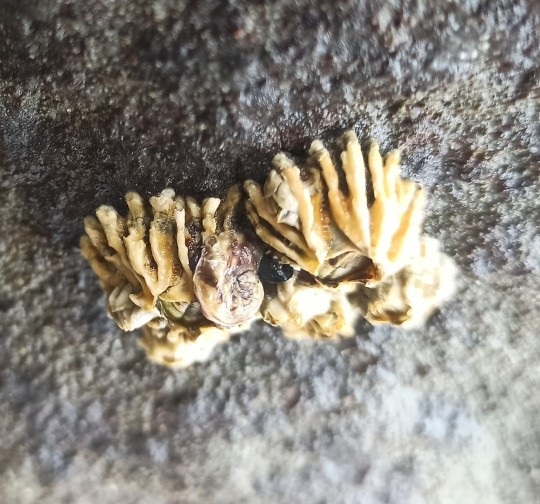




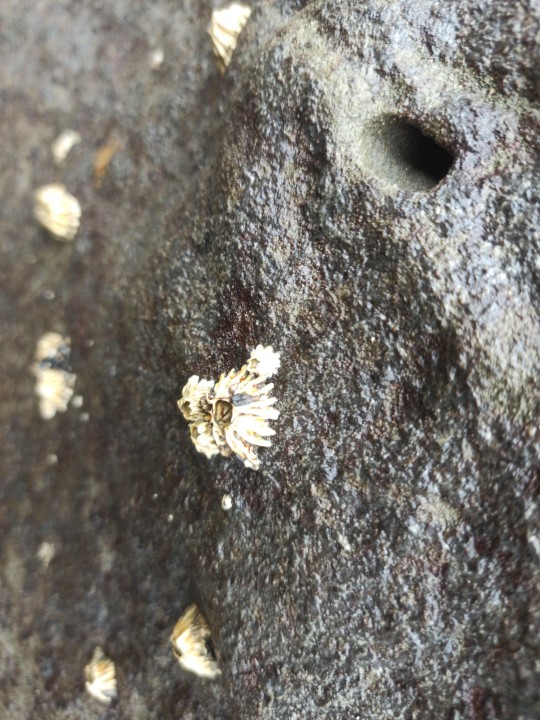
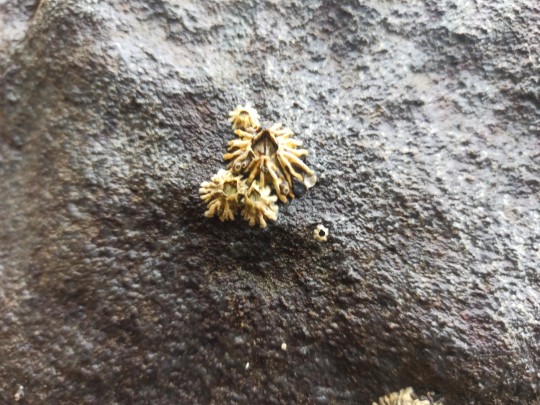
Epopella plicata is a species of symmetrical sessile barnacle in the family Tetraclitidae. It is found in New Zealand. On mid-tidal rocks.
Phylum: Arthropoda
Subphylum: Crustacea
Class: Thecostraca
Subclass: Cirripedia
Order: Balanomorpha
Family: Tetraclitidae
Genus: Epopella
Browns Bay, Auckland 0630
7QQ2+MPF Auckland
-36.7108220, 174.7518110
0 notes
Text
carapace
noun
A hard bony or chitinous outer covering, such as the fused dorsal plates of a turtle or the portion of the exoskeleton covering the head and thorax of a crustacean.
A protective, shell-like covering likened to that of a turtle or crustacean.
The shell of a turtle or tortoise; specifically, the upper shell, the under shell being called the plastron.
In Mammalia, the shell of an armadillo.In Cirripedia, the multivalvular shell, test, or case.
In higher Crustacea, the shield covering the cephalothorax, sometimes separable into a cephalostegite and an omostegite. See cut under Apus.
One of the many hard cases, tests, or shells which are likened to a carapace, as those of certain infusorians; a lorica.
The thick shell or shield which covers the back of the tortoise, or turtle, the crab, and other crustaceous animals.
A hard protective covering of bone or chitin.
0 notes
Text
Honestly, while he held certain... unfortunate beliefs, I do think someone should do art of videogame enemies in Ernst Haeckel's drawing-style.
Like, Outer Worlds got close, and Mobestiary has a similar (albeit more anatomical) feel, but I mean things like all the Headcrab variants drawn like the Cirripedia plate.
1 note
·
View note